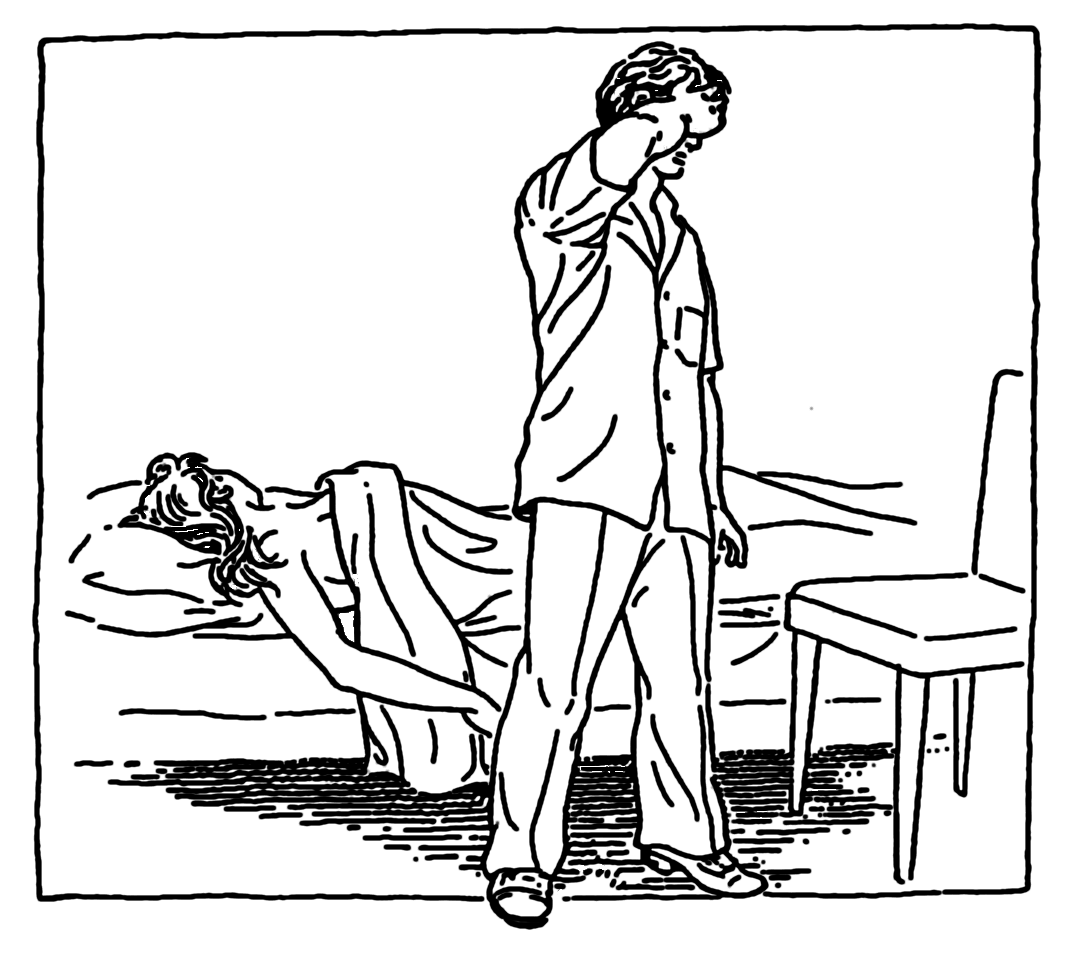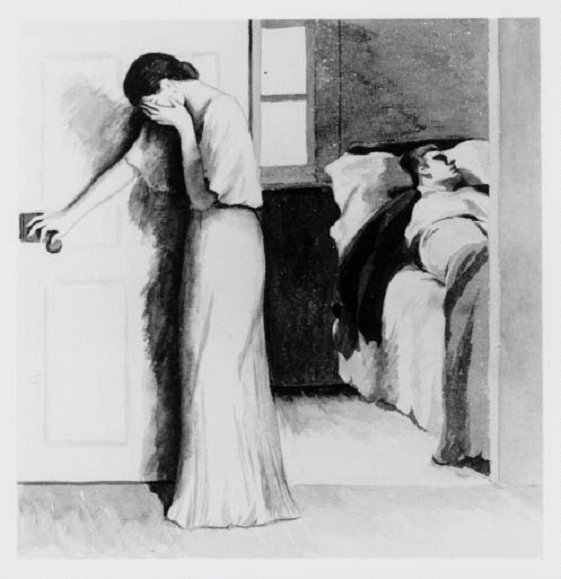

Investigate how a sample of men and women interpret these two versions of a TAT card. Report on the key differences and similarities between their responses, with extracts from the responses and a commentary of your own.
 |
 |
Guidance
For general guidance about what is expected in your essays for this module, see the general criteria.
|
What Key Features Do I Look For?
|
Please remember to avoid footnotes and to include an alphabetical list of 'References' which have been cited in the text (not a Bibliography of anything you have read for the essay). This list should include author's names, date, book titles (in italics), place of publication and publisher. Within the text always cite author's surname, date and page number. Double-space your text and number your pages. For more detailed notes on writing essays in this department, click here.
Advice for this particular assignment: These two pictures are two different versions of a TAT card (Thematic Apperception Test card). Examples based on such cards can be found in psychology textbooks, although here we are not using them for the same 'projective' purposes that they are normally used (so you don't need to elaborate on theories of their use). You are advised to print each image on a separate card. You need to assemble a sample of volunteer 'subjects'. You should ensure equal numbers of males and females and should include at least 10 males and 10 females. Since age might be a factor you may wish to include some people from older and younger age-groups. In order to check for any differences you will need to divide these into 4 sets of people (2 male sets and 2 female sets) - one set of each sex being shown only picture A and other being shown only picture B. You should show only one picture to each person. Show the relevant picture to only one individual at a time rather than to a group. If the basic question 'What is going on in this picture?' does not generate sufficient material you may need to ask further questions. Try to establish why they think what they do (what evidence do they see in the picture to support their interpretation?). You may also need to ask far more than 20 people in all- this depends partly on how effective your questioning is. Ideally you will have an audio tape-recorder to record responses; otherwise take careful written notes. Focus on both the extent to which the viewers agree and on the ways in which they disagree (this is, after all, the central focus of this module). In your commentary, try to refer back to some of the reasons listed in lectures for why people may differ in how they interpret an image (this assignment is meant to involve some analysis of apparent patterns as well as description - although clearly your sample is too small for you to generalise).
Are recurrent differences between men or between women as great or greater than any recurrent differences between men and women? When you are considering male versus female differences refer to differences between the sexes. However, beware of naive gender essentialism. Do not reduce any differences to physiological distinctions (e.g. by referring to 'the male brain' and 'the female brain'). Where there are differences, are these more a matter of socialisation than a matter of biological sex and more likely to be a product of current differences in social power in a patriarchal society rather than inherent differences? What kinds of factors might any differences be attributed to other than (or in addition to) gender (e.g. age)?
Your essay should include a critical discussion of your findings and references to any relevant published studies. You may find it useful also to refer to theories about the familiar textbook images designed to be interpreted as either one thing or another, such as the young woman/older woman, vase and faces (although note that such either/or images are not intended to be the main focus of your study here). The difference can be seen as being between recognition and interpretation - although this is not always a clearcut distinction and some theorists claim that you can't separate them. In relation to TAT cards, perhaps 'recognition' corresponds to general agreement about aspects of what is depicted (some people would class this as what is 'literally' or 'objectively' there) whilst 'interpretation' could refer to areas of disagreement (what is subjectively there). This raises philosophical issues about what is real (realism/objectivism versus idealism/subjectivism) - I have alluded to this issue several times in lectures. With both TAT cards and either/or images some reference to the psychological concept of perceptual set is called for - the predisposition (for what reasons?) to favour one 'interpretation' over another. Another link with lectures is the issue of top-down (expectation-driven) and bottom-up (data-driven) processes. What clues within the picture do people differ in picking out and how does this generate or follow from the overall schemata they are applying (such as a genre schema of melodrama)? In what ways do people draw upon a) personal experience and b) fictional or factual narratives they have seen, read or heard?
Use this consent form: Consent Form for Interviews, Photography and Recording
Note that this is an assignment for which the inclusion of relevant pictorial illustrations is likely to be an advantage. Incorporate illustrations electronically into your text (e.g. by scanning or downloading from the Internet) rather than literally cutting and pasting.
Some suggested reading

Note: Treat with extreme caution sources labelled with this symbol!


|